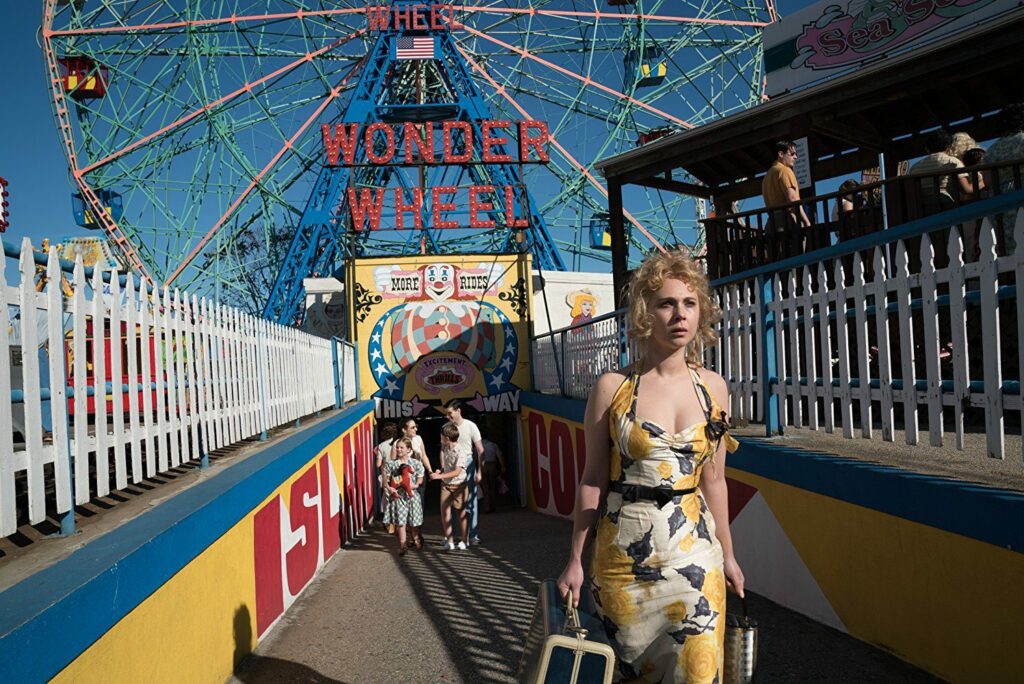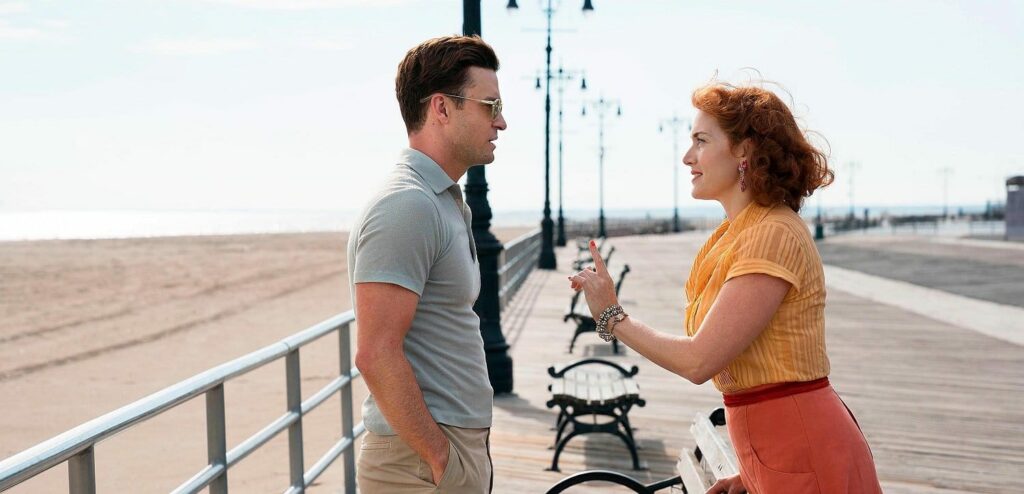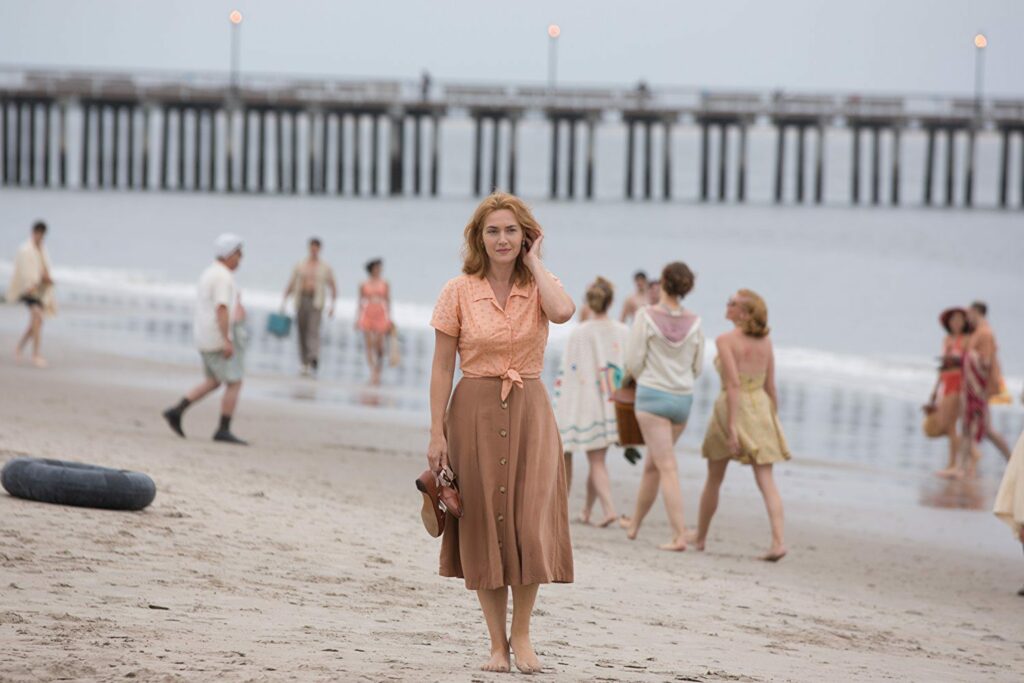A tragic tale of four tangled lives set to the vibrant backdrop of 1950’s Coney Island, Wonder Wheel see’s acclaimed filmmaker Woody Allen follow a tradition of quirky, character-driven stories that have defined his career for over 50 years.

A film defined by an artful exaggeration in style and a pessimistic outlook on life and love, Wonder Wheel takes your classic love triangle and subverts it in a way only an expert filmmaker could do. Showcasing all of the ups and downs of 1950’s America, with a nostalgic feeling that’s in vogue in modern cinema, the films turbulent story is mimicked by stylistic themes and cinematic conventions; painting a strong image of the characters’ inner demons for the audience to view.
Featuring impressive performances from Kate Winslet, Justin Timberlake, Juno Temple and Jim Belushi, Wonder Wheel centres around the fragile relationships between a loveless marriage, an estranged daughter and a poetic lifeguard as their mundane lives contrast with their dramatic fantasies. The films very setting mimics this, as the family’s isolated home inside the commotion of the theme park presents itself as a pearl within an oyster – a rich, complicated life trapped in the sea of lights and sound (a connection perhaps hinted at by Winslet’s job as a waitress at an Oyster restaurant).

Each character offers a uniquely tragic life: from Timberlake’s sadistically charming lifesaver and aspiring artist, viewing life through a poetic writer’s eyes, to Temple’s escaped mobster’s wife and Belushi’s recovering alcoholic carousel operator.
However, Kate Winslet’s role as Ginny Rannell is no doubt the films main attraction: a mother of a young pyromaniac misfit, a waitress trapped in a dead-end marriage and a passionate former actress in an affair with a younger man. While shifting between the lives of all those connected to the complicated family, the film gives us a keen insight into Ginny’s head, depicting her deteriorating emotional state. From shots following her taking aspirin at her own birthday party to romanticized images of Japanese gardens and kissing in the rain, we see her ups and downs in a picturesque expression of mood and conflict.

These shifts are heightened by the film’s creative use of colour, with the pale blues hues contrasting with the bright, vibrant oranges; echoing the shifts between the character’s own emotional states. Fitting nicely with the natural colours of Coney Island, the lighting of scenes shifts at the same pace as the characters’ emotions, with each character in a constant struggle in their convoluted lives. As the hyper-stylized reds and blues in moments of love and fantasy fade to more naturalistic shades, we see a constant contrast between depression and passion; a dull reality and beautiful fantasy.
These emotions are even considered in the smallest details of each character, with Ginny’s red hair expressing her longing for passion while her blue work uniform represents her state of contempt for her current life. The film often utilises such symbolism, with Ginny’s son’s pyromania mirroring the film’s themes of passion and potential, and the many scenes of love in the rain depicting freedom and escape for the land-locked characters. Emotions crash around these troubled characters like the Island’s lapping waves, shifting from bright to dim as the waves shift in and out of the shore around them.

Despite this emphasis on the poetic symbol, Allen overall offers a very bleak look at life in Wonder Wheel. The film plays out as an expression of life’s futility, with character’s being presented with difficult decisions and often being victims of unfortunate situations. While paying attention to each character’s dreams, the reality of their situations is much dimmer, as can be seen even in the film’s final moments. Regardless of how their lives might seem when lit by the rain light, reality is far darker than the brightly lit carnival makes it appear.
A striking discord between romantic fantasy and dull reality, Wonder Wheel is a return to form for Woody Allen, painting an elegant picture of four sad lives trapped within the joy and cheer of Coney Island.




